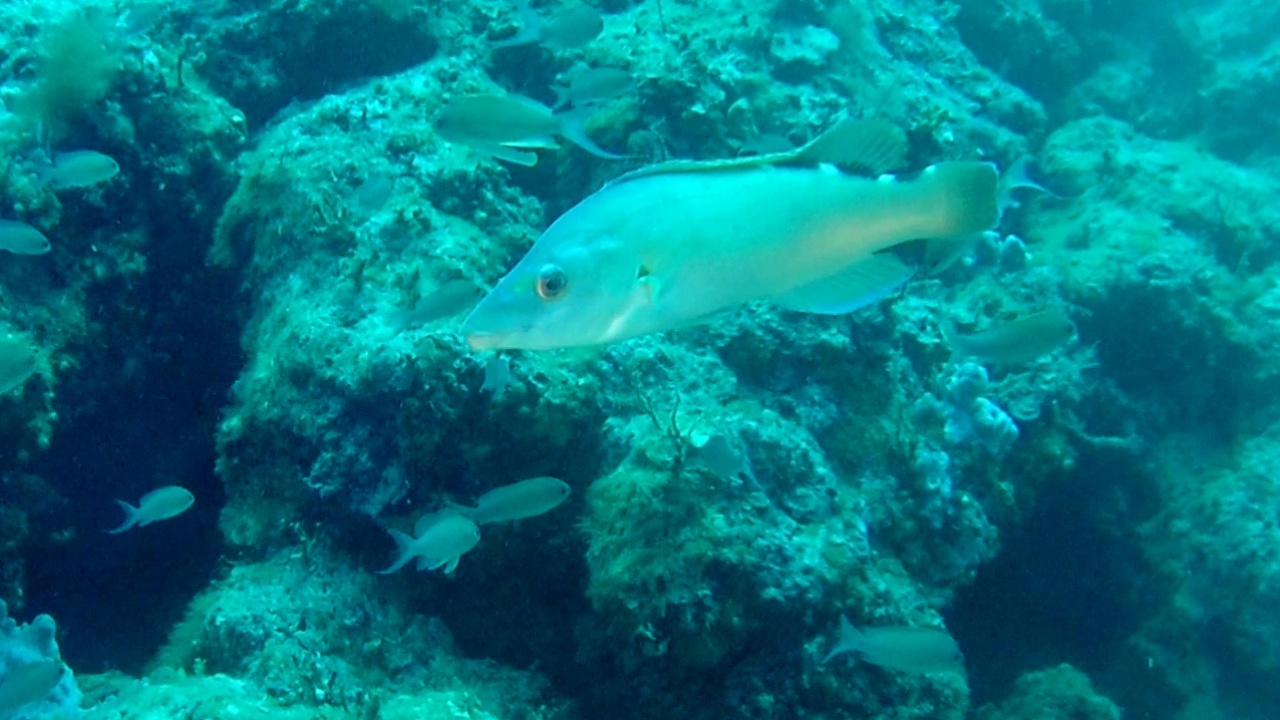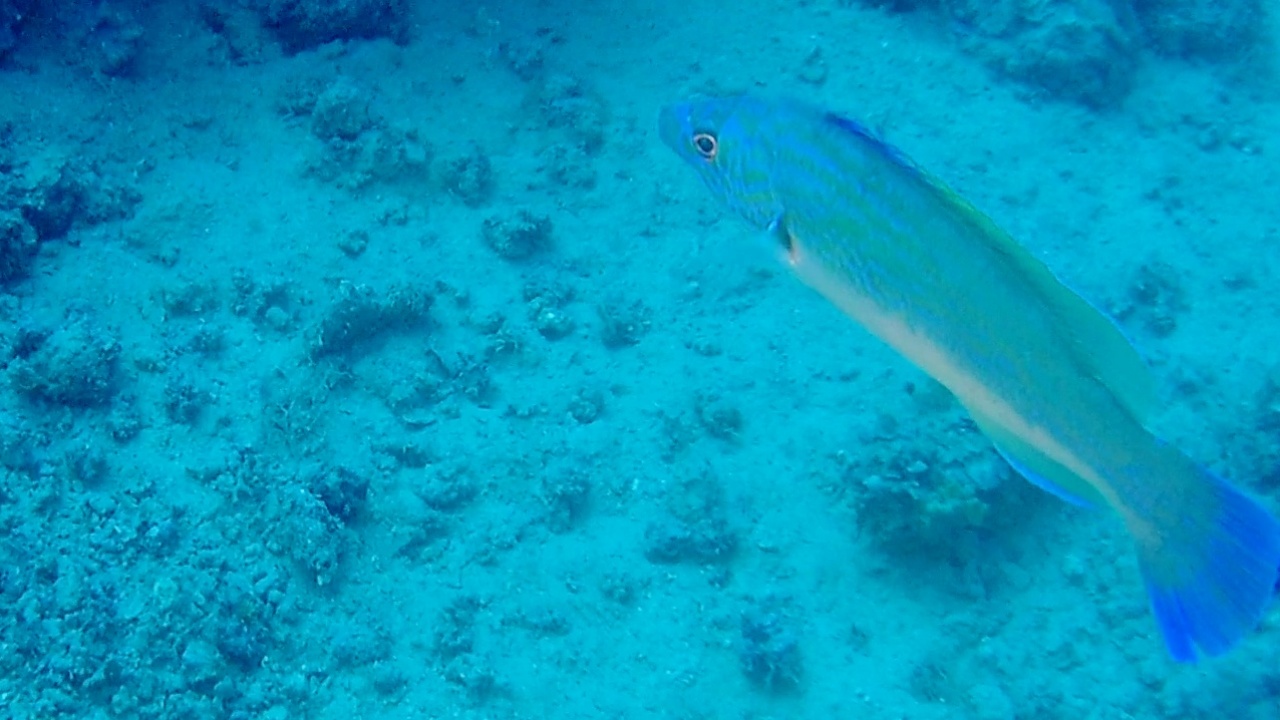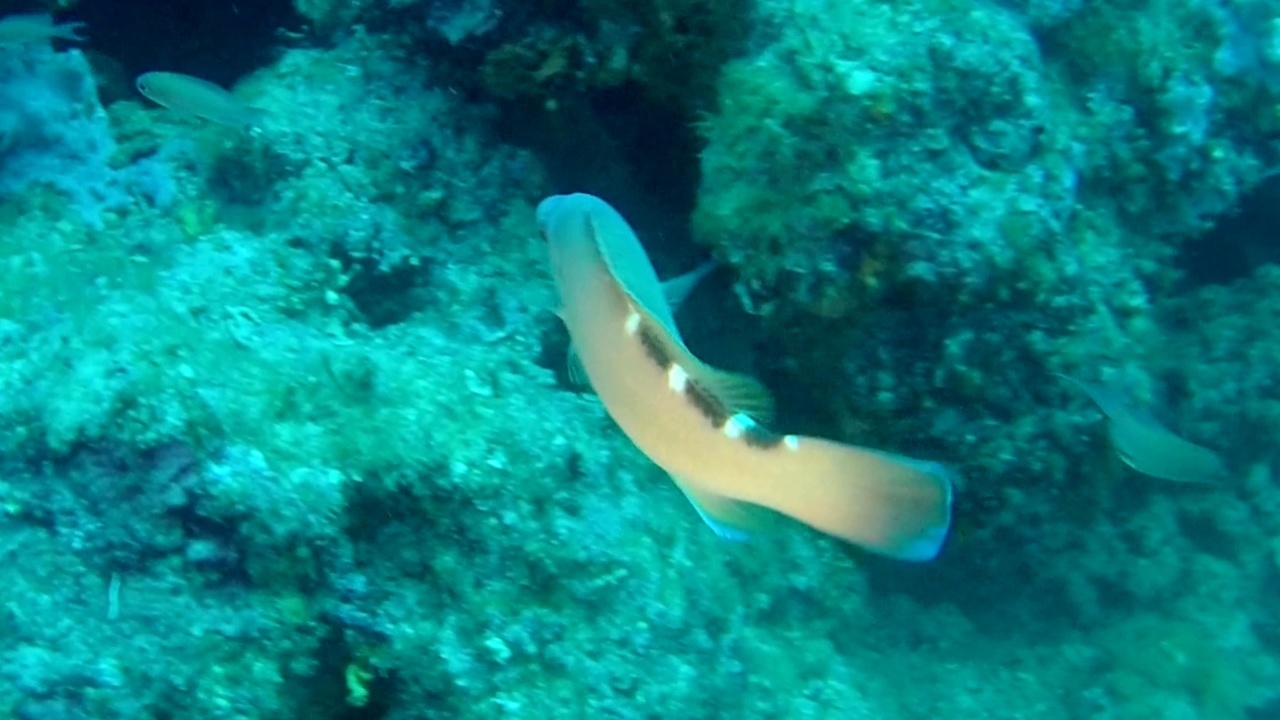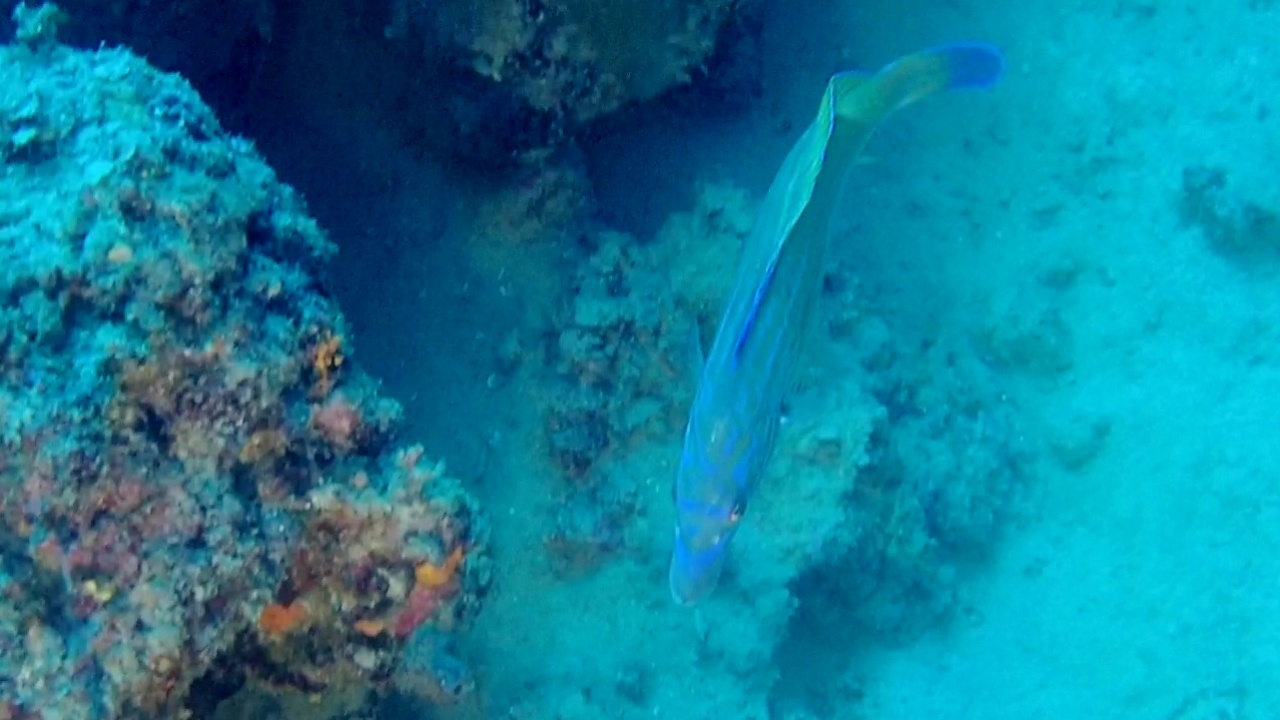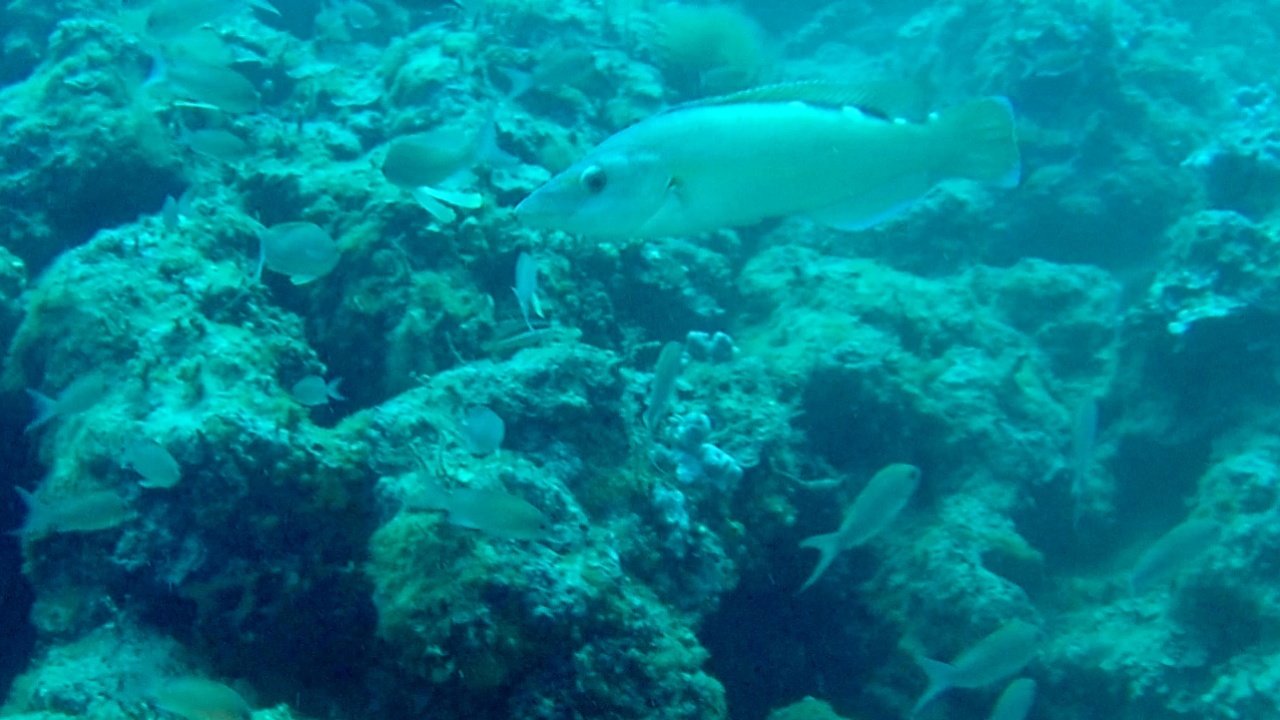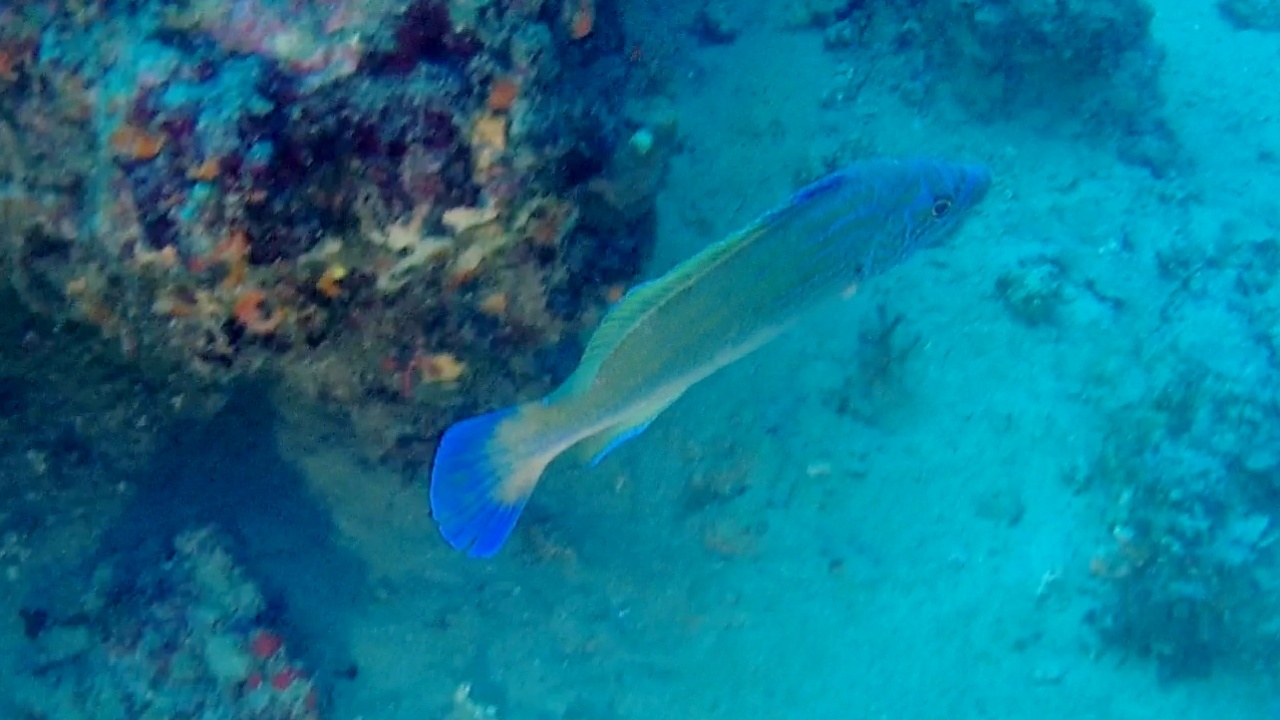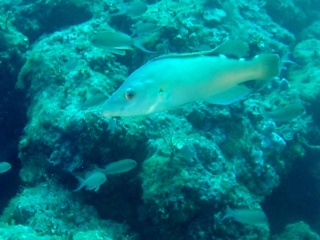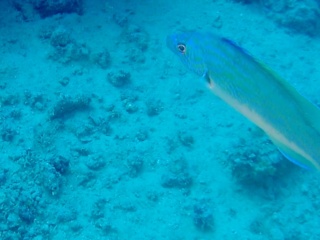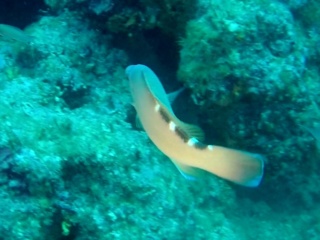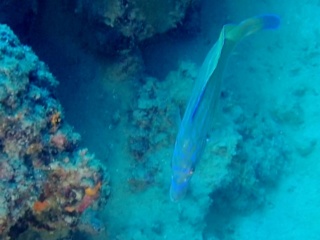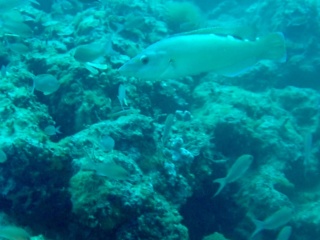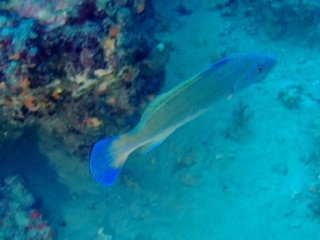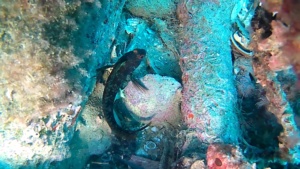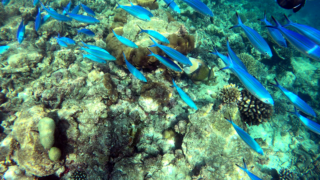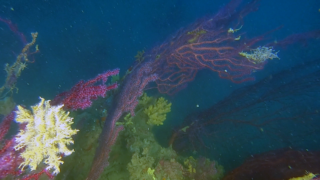The Cuckoo Wrasse (Labrus mixtus), belongs to the class Osteichthyes, subclass Actinopterygii, order Perciformes, suborder Percoidei, family Labridae. Tordo Fischietto Labrus mixtus
The cuckoo wrasse is a species of wrasse native to the eastern Atlantic Ocean from Norway to Senegal, including the Azores and Madeira. It is also found in the Mediterranean Sea. They can be found amongst the algae on rocky shores at depths from 2 to 200 m, though mostly between 40 and 80 m. This species is an important food fish for local populations and is also popular as a game fish. It is also a popular fish for display in public aquaria.
This species is sexually dimorphic. The male normally has a blue head with a blue body and orange pattern and blue tail. During the breeding season. the body colouration gradually changes to an orange head and body with a blue pattern that may be more pronounced at the head. The male can reach 40 cm. The female, however, has an orange head, body, and tail with a black stripe on the dorsl fin broken up by a number of white spots. Females can grow to 30 cm. Tordo Fischietto Labrus mixtus
Much of the Mediterranean coast enjoys a hot-summer Mediterranean climate. However, most of its southeastern coast has a hot desert climate, and much of Spain’s eastern (Mediterranean) coast has a cold semi-arid climate. Although they are rare, tropical cyclone occasionally form in the Mediterranean Sea, typically in September–November.
Because of the short residence time of waters, the Mediterranean Sea is considered a hot-spot for climate change effects. Deep water temperatures have increased by 0.12 °C (0.22 °F) between 1959 and 1989. According to climate projections, the Mediterranean Sea could become warmer. The decrease in precipitation over the region could lead to more evaporation ultimately increasing the Mediterranean Sea salinity. Because of the changes in temperature and salinity, the Mediterranean Sea may become more stratified by the end of the 21st century, with notable consequences on water circulation and biogeochemistry.
 English
English Italiano
Italiano
